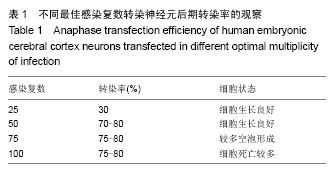| [1] Rolyan H, Scheffold A, Heinrich A, et al. Telomere shortening reduces Alzheimer's disease amyloid pathology in mice. Brain. 2011;134(Pt 7):2044-2056.
[2] Iulita MF, Cuello AC. Nerve growth factor metabolic dysfunction in Alzheimer's disease and Down syndrome. Trends Pharmacol Sci. 2014. in press.
[3] Bidzan M, Bidzan L, Pachalska M. Neuropsychiatric symptoms in patients with Alzheimer's disease with a vascular component. Ann Agric Environ Med. 2014;21(2):412-415.
[4] Spencer B, Masliah E. Immunotherapy for Alzheimer's disease: past, present and future. Front Aging Neurosci. 2014; 6:114.
[5] Gusareva ES, Carrasquillo MM, Bellenguez C, et al. Genome-wide association interaction analysis for Alzheimer's disease. Neurobiol Aging. 2014. in press.
[6] Tsolaki A, Kazis D, Kompatsiaris I, et al. Electroencephalogram and Alzheimer's disease: clinical and research approaches. Int J Alzheimers Dis. 2014;2014: 349249.
[7] Storbeck M, Hupperich K, Gaspar JA, et al. Neuronal-specific deficiency of the splicing factor Tra2b causes apoptosis in neurogenic areas of the developing mouse brain. PLoS One. 2014;9(2):e89020.
[8] Yu W, Bonnet M, Farso M, et al. The expression of apoptosis inducing factor (AIF) is associated with aging-related cell death in the cortex but not in the hippocampus in the TgCRND8 mouse model of Alzheimer's disease. BMC Neurosci. 2014;15(1):73.
[9] Ghasemi R, Zarifkar A, Rastegar K, et al. Insulin protects against Aβ-induced spatial memory impairment, hippocampal apoptosis and MAPKs signaling disruption. Neuropharmacology. 2014;85C:113-120.
[10] Baglio F, Saresella M, Preti MG, et al. Neuroinflammation and brain functional disconnection in Alzheimer's disease. Front Aging Neurosci. 2013;5:81.
[11] Turunc Bayrakdar E, Uyanikgil Y, Kanit L, et al. Nicotinamide treatment reduces the levels of oxidative stress, apoptosis, and PARP-1 activity in Aβ(1-42)-induced rat model of Alzheimer's disease. Free Radic Res. 2014;48(2):146-158.
[12] Wong HK, Veremeyko T, Patel N, et al. De-repression of FOXO3a death axis by microRNA-132 and -212 causes neuronal apoptosis in Alzheimer's disease. Hum Mol Genet. 2013;22(15):3077-3092.
[13] Rolyan H, Scheffold A, Heinrich A, et al. Telomere shortening reduces alzheimer's disease amyloid pathology in mice. Brain. 2011;134(PT 7):2044-2056.
[14] Parra ER, Pincelli MS, Teodoro WR, et al. Modeling pulmonary fibrosis by abnormal expression of telomerase/apoptosis/collagen V in experimental usual interstitial pneumonia. Braz J Med Biol Res. 2014. in press.
[15] Li YL, Qin QP, Liu YC, et al. A platinum(II) complex of liriodenine from traditional Chinese medicine (TCM): Cell cycle arrest, cell apoptosis induction and telomerase inhibition activity via G-quadruplex DNA stabilization. J Inorg Biochem. 2014;137:12-21.
[16] Nitta E, Yamashita M, Hosokawa K, et al. Telomerase reverse transcriptase protects ATM-deficient hematopoietic stem cells from ROS-induced apoptosis through a telomere-independent mechanism. Blood. 2011;117(16):4169-4180.
[17] Miri-Moghaddam E, Deezagi A, Soheili ZS, et al. Apoptosis and reduced cell proliferation of HL-60 cell line caused by human telomerase reverse transcriptase inhibition by siRNA. Acta Haematol. 2010;124(2):72-78.
[18] Dong W, Qian Y, Yang L. Telomerase, hTERT and splice variants in patients with myelodysplastic syndromes. Leuk Res. 2014;38(7):830-835.
[19] Noureini SK, Wink M. Antiproliferative effects of crocin in HepG2 cells by telomerase inhibition and hTERT down-regulation. Asian Pac J Cancer Prev. 2012;13(5): 2305-2309.
[20] Avci CB, Yilmaz S, Dogan ZO, et al. Quercetin-induced apoptosis involves increased hTERT enzyme activity of leukemic cells. Hematology. 2011;16(5):303-307.
[21] Biron-Shental T, Amiel A, Anchidin R, et al. Telomere length and telomerase reverse transcriptase mRNA expression in patients with hepatitis C. Hepatogastroenterology. 2013; 60(127):1713-1716.
[22] Smith Sonneborn J. Alternative strategy for Alzheimer's disease: stress response triggers. Int J Alzheimers Dis. 2012;2012:684283.
[23] Baksheev VI, Kolomoets NM. Melatonin: its role in the system of neurohumoral regulation in man. Part 2. Klin Med (Mosk). 2011;89(2):8-13.
[24] 张洁,廖亚平,吴灵芝,等.hTERT基因转染对人胚胎皮层神经元生长的影响[J].解剖学研究,2008,30(4):251-256.
[25] Forestier A, Douki T, Sauvaigo S, et al. Alzheimer's disease-associated neurotoxic Peptide amyloid-β impairs base excision repair in human neuroblastoma cells. Int J Mol Sci. 2012;13(11):14766-14787.
[26] Varga J, Bátor J, Péter M, et al. The role of the p53 protein in nitrosative stress-induced apoptosis of PC12 rat pheochromocytoma cells. Cell Tissue Res. 2014. in press.
[27] Santucci R, Sinibaldi F, Polticelli F, et al. Role of cardiolipin in mitochondrial diseases and apoptosis. Curr Med Chem. 2014; 21(23):2702-2714.
[28] Yuan L, Wang Y, Wang J, et al. Additive effect of zinc oxide nanoparticles and isoorientin on apoptosis in human hepatoma cell line. Toxicol Lett. 2014;225(2):294-304.
[29] Vaughn LS, Snee B, Patel RC. Inhibition of PKR protects against tunicamycin-induced apoptosis in neuroblastoma cells. Gene. 2014;536(1):90-96.
[30] Crescitelli R, Lässer C, Szabó TG, et al. Distinct RNA profiles in subpopulations of extracellular vesicles: apoptotic bodies, microvesicles and exosomes. J Extracell Vesicles. 2013;2.
[31] Issman L, Brenner B, Talmon Y, et al. Cryogenic transmission electron microscopy nanostructural study of shed microparticles. PLoS One. 2013;8(12):e83680.
[32] Xin F, Li-hong L, Alexiades-Armenakas M, et al. Histological and electron microscopic analysis of fractional micro-plasma radio-frequency technology effects. J Drugs Dermatol. 2013; 12(11):1210-1214.
[33] Baumgart T, Kriesen S, Hildebrandt G, et al. Effect of epothilone B on cell cycle, metabolic activity, and apoptosis induction on human epithelial cancer cells-under special attention of combined treatment with ionizing radiation. Cancer Invest. 2012;30(8):593-603.
[34] Pekar?íková L, Knopfová L, Ondroušková E, et al. The use of flow cytometry for analysis of the mitochondrial cell death. Klin Onkol. 2014;27 Suppl:15-21.
[35] Nuvoli B, Santoro R, Catalani S, et al. CELLFOOD™ induces apoptosis in human mesothelioma and colorectal cancer cells by modulating p53, c-myc and pAkt signaling pathways. J Exp Clin Cancer Res. 2014;33:24.
[36] Lawrence MD, Blyth BJ, Ormsby RJ, et al. False-positive TUNEL staining observed in SV40 based transgenic murine prostate cancer models. Transgenic Res. 2013;22(5): 1037-1047.
[37] Turunc Bayrakdar E, Uyanikgil Y, Kanit L, et al. Nicotinamide treatment reduces the levels of oxidative stress, apoptosis, and PARP-1 activity in Aβ(1-42)-induced rat model of Alzheimer's disease. Free Radic Res. 2014;48(2):146-158.
[38] Bousette N, Abbasi C, Chis R, et al. Calnexin silencing in mouse neonatal cardiomyocytes induces Ca2+ cycling defects, ER stress, and apoptosis. J Cell Physiol. 2014; 229(3):374-383.
[39] Tian X, Zhang L, Wang J, et al. The protective effect of hyperbaric oxygen and Ginkgo biloba extract on Aβ25-35-induced oxidative stress and neuronal apoptosis in rats. Behav Brain Res. 2013;242:1-8. |


.jpg)